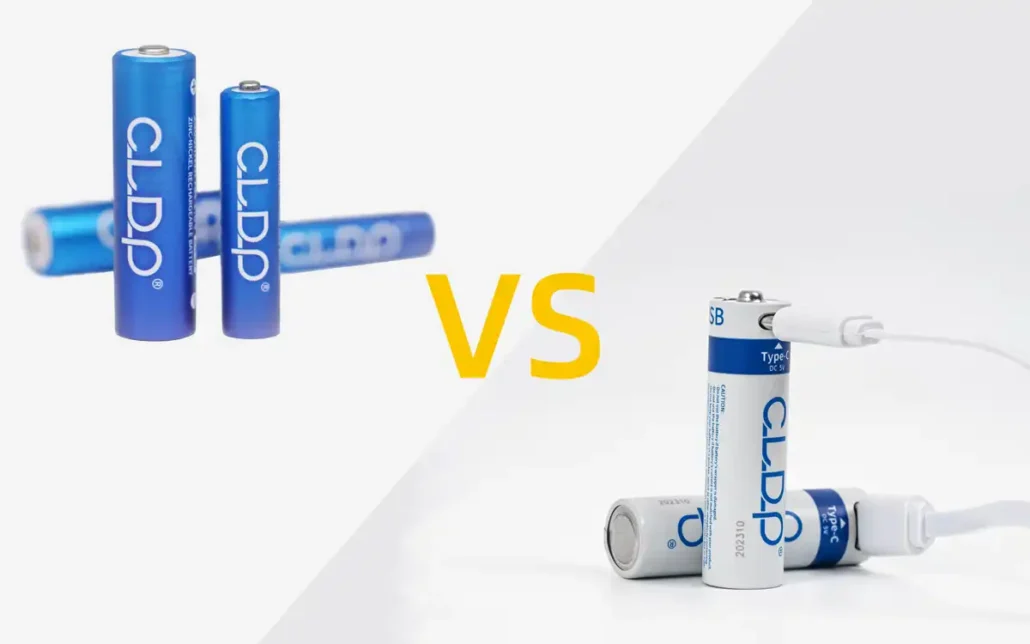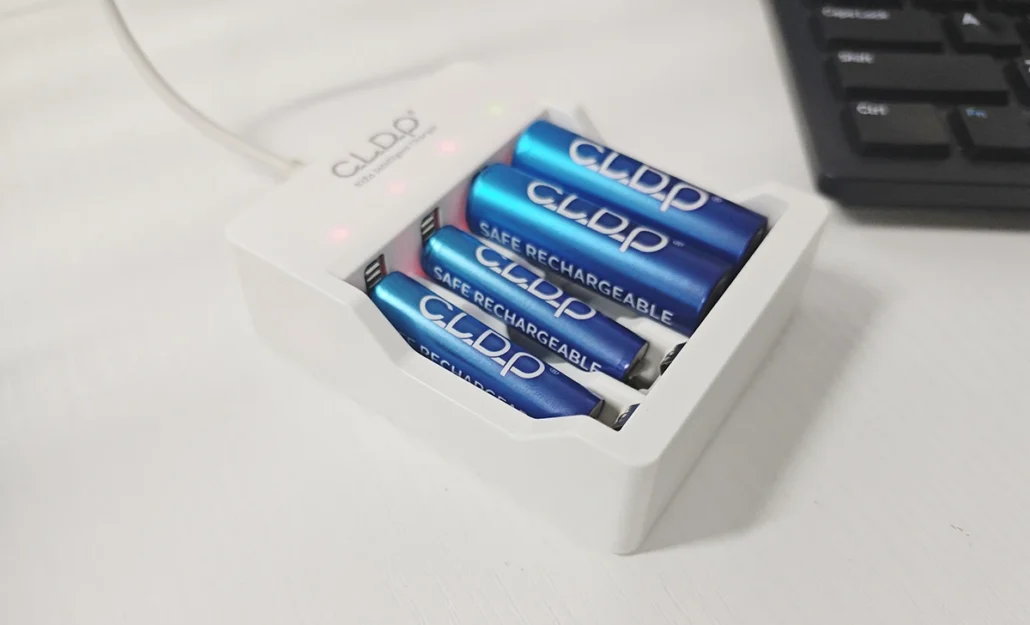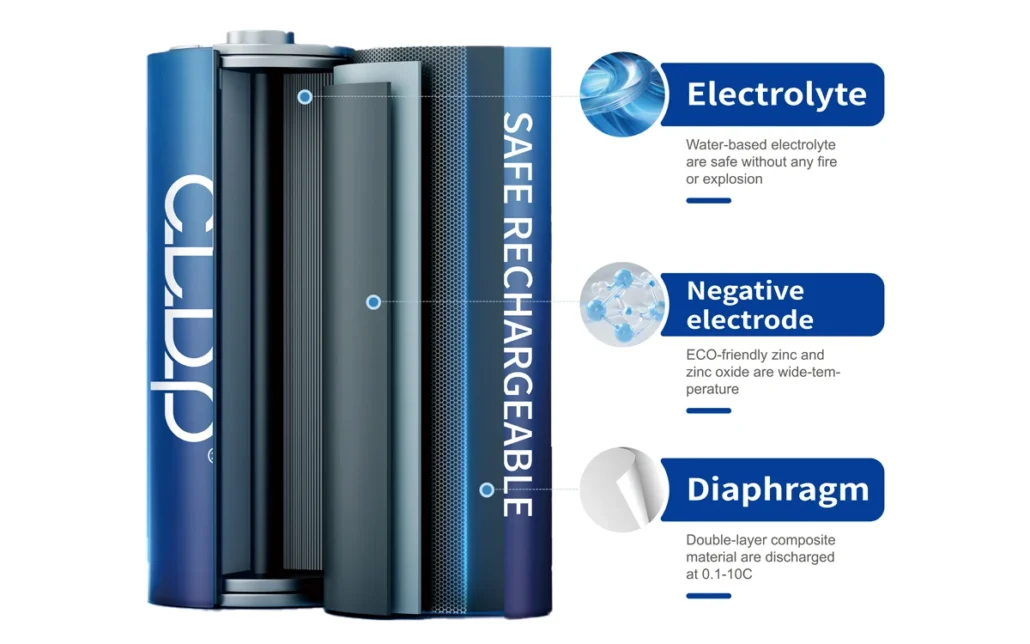1.6V zinc nickel rechargeable batteries and 1.5V lithium batteries are two different battery technologies with significant differences in voltage, energy density, cycle life, charging time, safety, environmental friendliness, and application areas.

Voltage
1.6V zinc nickel rechargeable battery: The nominal voltage is 1.6V, and when fully charged, the voltage can reach 1.8V. When discharged, it operates in a curve voltage reduction mode, which is closer to alkaline batteries.
1.5V lithium battery: The nominal voltage is 1.5V, usually reduced from 3.7V to 1.5V through a built-in circuit, and discharged at a constant voltage. When the battery is depleted, it is more sudden.
Energy density
1.6V zinc nickel rechargeable battery: The energy density is relatively low, usually between 60-120 Wh/kg.
1.5V lithium battery: With a high energy density, typically between 150-250 Wh/kg, it is suitable for applications with high energy demands.
Charging time
1.6V zinc nickel rechargeable battery: Charging time is longer, usually taking several hours, but it is safer.
1.5V lithium battery: Due to the high voltage of the battery cells, the charging time is relatively short, usually taking about 2 hours to fully charge.
Security
1.6V zinc nickel rechargeable battery: relatively safe, less prone to thermal runaway or explosion, with broad application prospects.
1.5V lithium battery: A strict management system (BMS) is required to prevent overcharging, overdischarging, and short circuits, otherwise thermal runaway or explosion may occur.
Environmental friendliness
1.6V zinc nickel rechargeable battery: environmentally friendly(Advantages of Zinc Nickel Batteries in Environmental Protection), free of heavy metals, and easy to recycle.
1.5V lithium battery: contains lithium and other heavy metals, and the recycling process is relatively complex.
Cost
1.6V zinc nickel rechargeable battery: Low cost, can reduce application costs.
1.5V lithium battery: higher cost.
Application Fields
1.6V zinc nickel rechargeable battery: suitable for high-power and high-power applications such as microphones, electric toys, smart door locks, digital cameras, high-end phone cases, etc.
1.5V lithium battery: suitable for conventional application devices such as wireless mice, flashlights, etc.
Temperature performance
1.6V zinc nickel rechargeable battery: Zinc nickel batteries have stable performance over a wide temperature range and are more suitable for extreme environments.
1.5V lithium battery: narrow operating temperature range, low temperature can affect performance, and high temperature poses risks.
Summary
1.6V zinc nickel rechargeable battery: more suitable for high-power and high-power intelligent devices, with good environmental protection and safety, and will have more applications in the future.
1.5V lithium battery: suitable for conventional electrical appliances, limited in application range due to battery characteristics.




